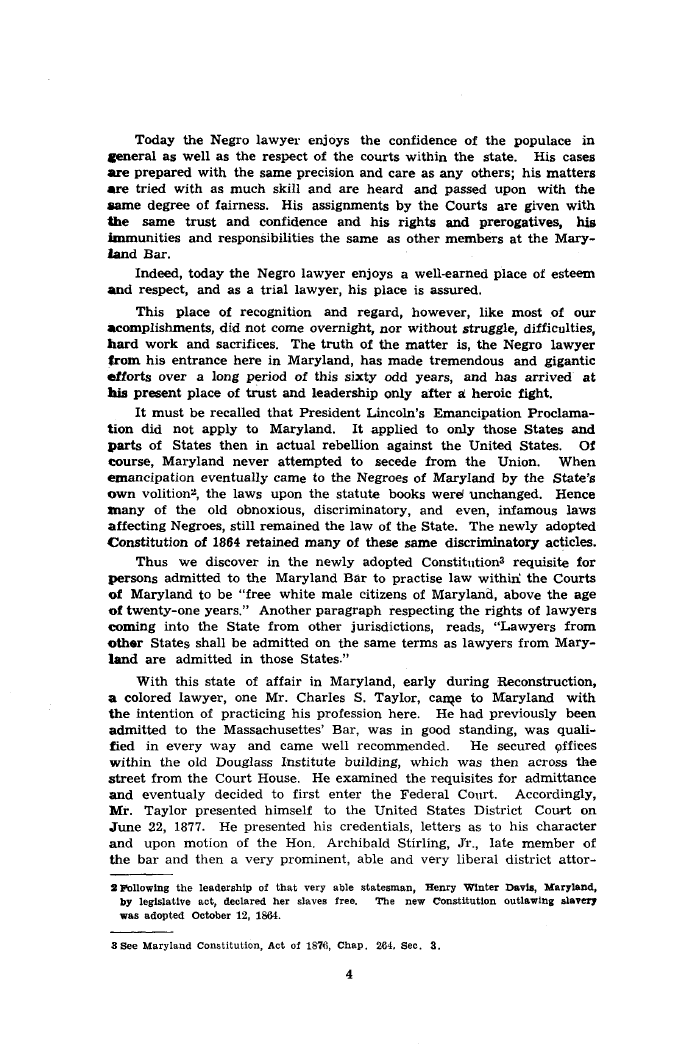|
Today the Negro lawyer enjoys the confidence of the populace in general as well as the respect of the courts within the state. His cases are prepared with the same precision and care as any others; his matters are tried with as much skill and are heard and passed upon with the same degree of fairness. His assignments by the Courts are given with the same trust and confidence and his rights and prerogatives, his immunities and responsibilities the same as other members at the Mary-land Bar.
Indeed, today the Negro lawyer enjoys a well-earned place of esteem and respect, and as a trial lawyer, his place is assured.
This place of recognition and regard, however, like most of our acomplishments, did not come overnight, nor without struggle, difficulties, hard work and sacrifices. The truth of the matter is, the Negro lawyer from his entrance here in Maryland, has made tremendous and gigantic efforts over a long period of this sixty odd years, and has arrived at his present place of trust and leadership only after a heroic fight.
It must be recalled that President Lincoln's Emancipation Proclama-tion did not apply to Maryland. It applied to only those States and parts of States then in actual rebellion against the United States. Of course, Maryland never attempted to secede from the Union. When emancipation eventually came to the Negroes of Maryland by the State's own volition2, the laws upon the statute books were unchanged. Hence many of the old obnoxious, discriminatory, and even, infamous laws affecting Negroes, still remained the law of the State. The newly adopted Constitution of 1864 retained many of these same discriminatory acticles.
Thus we discover in the newly adopted Constitution3 requisite for persons admitted to the Maryland Bar to practise law within the Courts of Maryland to be "free white male citizens of Maryland, above the age of twenty-one years." Another paragraph respecting the rights of lawyers coining into the State from other jurisdictions, reads, "Lawyers from other States shall be admitted on the same terms as lawyers from Mary-land are admitted in those States."
With this state of affair in Maryland, early during Reconstruction, a colored lawyer, one Mr. Charles S. Taylor, came to Maryland with the intention of practicing his profession here. He had previously been admitted to the Massachusettes' Bar, was in good standing, was quali-fied in every way and came well recommended. He secured offices within the old Douglass Institute building, which was then across the street from the Court House. He examined the requisites for admittance and eventualy decided to first enter the Federal Court. Accordingly, Mr. Taylor presented himself to the United States District Court on June 22, 1877. He presented his credentials, letters as to his character and upon motion of the Hon. Archibald Stirling, Jr., late member of the bar and then a very prominent, able and very liberal district attor-
2 Following the leadership of that very able statesman, Henry Winter Davis, Maryland, by legislative act, declared her slaves free. The new Constitution outlawing slavery was adopted October 12, 1864.
3 See Maryland Constitution, Act of 1876, Chap. 264, Sec. 3.
4
|

